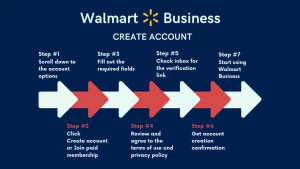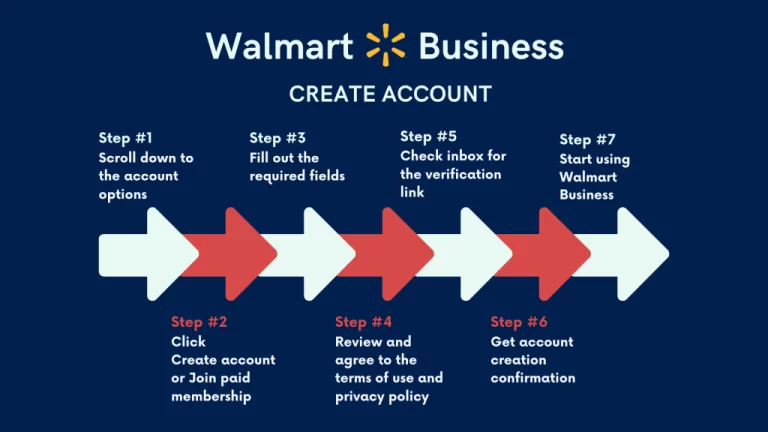
Creating a Branded Dropshipping Supplier Template: A Step-by-Step Guide
Dropshipping is quickly becoming one of the most popular ways to start an eCommerce business. With a lower overhead cost and no need to keep inventory, it’s an appealing option for many entrepreneurs. However, creating a recognizable brand can be a challenge when using a dropshipping supplier. That’s where creating a branded dropshipping supplier template comes in. This guide will take you step-by-step through the process of creating a template that showcases your brand and makes it easy for your supplier to fulfill orders in a way that aligns with your vision. From choosing your colors and fonts to customizing your packing slips and shipping labels, this guide will help you create a seamless and professional experience for your customers. By the end of this guide, you’ll have everything you need to create a branded dropshipping supplier template that will set your business apart from the competition.
1. Introduction: Understanding the importance of a branded dropshipping supplier template
In the fast-paced world of dropshipping, standing out from the competition is crucial to success. One effective way to establish your brand identity and create a seamless experience for your customers is by creating a branded dropshipping supplier template. This comprehensive guide will take you through the step-by-step process of creating a template that not only showcases your brand but also enhances the overall customer experience.
Understanding the importance of a branded dropshipping supplier template is the first step towards building a strong foundation for your business. A template serves as a consistent and recognizable representation of your brand, regardless of the products you offer. It allows you to maintain a cohesive look and feel across all communication channels, including order confirmations, shipping notifications, and customer support emails.
By incorporating your brand elements, such as logo, color palette, and typography, into your supplier template, you create a sense of professionalism and credibility. Customers will easily identify your brand and associate it with quality and reliability. This not only fosters trust but also helps in developing brand loyalty, leading to repeat purchases and positive word-of-mouth recommendations.
Furthermore, a branded dropshipping supplier template simplifies the ordering process for your customers. With a consistent and familiar layout, they can quickly navigate through the information, making their shopping experience more efficient and enjoyable. A well-designed template can also include personalized touches, such as thank-you notes or exclusive discount codes, which further strengthen the bond between your brand and the customer.
In the following sections, we will delve into the specific steps required to create a branded dropshipping supplier template. From selecting the right platform to customizing design elements, we will provide you with practical tips and insights to ensure a seamless and impactful template that sets your brand apart. So let’s dive in and unlock the potential of a branded dropshipping supplier template for your business!
2. Step 1: Research and define your brand identity
Before you dive into creating a dropshipping supplier template, it is crucial to research and define your brand identity. This step sets the foundation for your entire template and ensures that your brand stands out from the competition.
Start by conducting market research to understand your target audience and their preferences. Look at successful dropshipping suppliers in your niche and identify what makes them unique. This will help you identify gaps in the market and determine how you can position your brand differently.
Next, define your brand’s mission, values, and personality. Think about the message you want to convey to your customers and how you want them to perceive your brand. Are you aiming for a trendy and modern vibe, or perhaps a more traditional and reliable image? These decisions will influence your overall branding strategy and the design elements of your template.
Consider your brand’s visual identity as well. This includes elements such as your logo, color palette, typography, and imagery. These visual elements should align with your brand’s personality and resonate with your target audience.
Additionally, think about your brand’s tone of voice. How do you want to communicate with your customers? Are you aiming for a friendly and conversational tone, or a more professional and formal approach? Consistency in your tone of voice helps build trust and recognition among your customers.
Lastly, don’t forget to research your competitors. Analyze their branding strategies and identify what works well and what you can improve upon. This will help you differentiate your brand and create a unique dropshipping supplier template.
By thoroughly researching and defining your brand identity, you will have a solid foundation for creating a branded dropshipping supplier template that effectively communicates your message and resonates with your target audience.
3. Step 2: Choose a platform for creating your branded template
When it comes to creating a branded dropshipping supplier template, choosing the right platform is crucial. You want a platform that is user-friendly, customizable, and offers the features you need to showcase your brand effectively.
One popular option is Shopify, a leading e-commerce platform known for its simplicity and versatility. Shopify offers a wide range of professionally designed templates that can be easily customized to reflect your brand’s unique identity. With its drag-and-drop interface, you can effortlessly add your logo, choose your brand colors, and create a visually appealing template that aligns with your brand image.
Another option to consider is WooCommerce, a plugin for WordPress. WooCommerce provides a robust and flexible platform for building your dropshipping supplier template. With a wide range of themes and plugins available, you can customize your template to suit your brand’s specific requirements. Additionally, WooCommerce offers seamless integration with various payment gateways and shipping options, making it easy for your customers to complete their purchase.
If you’re looking for a more budget-friendly option, you might consider platforms like Wix or Squarespace. These website builders offer intuitive drag-and-drop editors, making it easy to create a visually appealing template without any coding knowledge. While they may not have as many e-commerce-specific features as Shopify or WooCommerce, they can still provide a solid foundation for your branded dropshipping supplier template.
Ultimately, the platform you choose will depend on your specific needs and preferences. Take the time to explore different options, consider your budget, and ensure that the platform aligns with your long-term goals for your dropshipping business. Remember, the goal is to create a branded template that not only captures your brand’s essence but also provides a seamless and enjoyable shopping experience for your customers.
4. Step 3: Designing a visually appealing and cohesive template
When it comes to dropshipping, having a visually appealing and cohesive template for your suppliers is crucial in creating a strong and memorable brand. A well-designed template not only enhances the overall customer experience but also instills trust and credibility in your brand.
To begin designing your template, start by selecting a color scheme that aligns with your brand’s identity. Consider using colors that evoke the desired emotions and reflect the nature of your products. For example, if you’re selling eco-friendly products, opting for earthy tones might be a great choice.
Next, choose fonts that are easy to read and visually pleasing. Consistency is key here, so select a primary font for headings and a complementary font for body text. This will ensure a cohesive and professional look throughout your template.
Incorporate your brand’s logo strategically into the template design. Place it in the header or footer of each page to reinforce brand recognition. Make sure the logo is high-resolution and displayed prominently.
When designing the layout of your template, keep it clean and organized. Use white space effectively to allow your products and content to breathe. Consider incorporating visual elements such as product images, icons, or illustrations that enhance the overall aesthetic appeal.
Ensure that the template is mobile-friendly and responsive. With the majority of users accessing websites through their mobile devices, it’s crucial that your template adapts seamlessly across different screen sizes.
Lastly, consider usability and functionality. Make sure that your template is user-friendly, with clear navigation and intuitive features. Include sections for product descriptions, pricing, shipping information, and any other relevant details that your suppliers may need to showcase your products effectively.
By following these steps and investing time and effort into designing a visually appealing and cohesive template, you’ll be able to create a strong and memorable brand for your dropshipping suppliers. This will not only enhance the overall customer experience but also set you apart from competitors in the market.
5. Step 4: Customizing the template to reflect your brand colors and logo
Now that you have selected a dropshipping supplier template that suits your business needs, it’s time to customize it and make it uniquely yours. This step is crucial in creating a cohesive and professional brand image that resonates with your customers.
Start by incorporating your brand colors into the template. Your brand colors play a significant role in establishing visual consistency and recognition. Consider using the primary colors from your logo or any other color scheme that reflects your brand’s personality. This will ensure that your template blends seamlessly with the rest of your branding materials.
Next, it’s time to incorporate your logo into the template. Your logo is the face of your brand and should be prominently displayed in your dropshipping supplier template. Place it strategically, such as in the header or footer of the template, ensuring its visibility without overpowering the overall design.
Remember to maintain consistency in typography as well. Use fonts that align with your brand’s identity and are easy to read. Consistent typography across your template will contribute to a professional and cohesive look.
In addition to colors and logo placement, you can also consider customizing other elements of the template, such as background images, icons, and buttons. Make sure these elements align with your brand’s aesthetic and messaging.
By customizing the dropshipping supplier template to reflect your brand colors and logo, you are creating a strong, recognizable visual identity for your business. This will not only enhance your brand’s credibility but also leave a lasting impression on your customers, fostering trust and loyalty.
6. Step 5: Adding key information and sections to the template
Now that you have the basic structure of your dropshipping supplier template in place, it’s time to add key information and sections that will make it truly branded and effective. These additions will help streamline your communication with suppliers and ensure a consistent and professional image for your business.
First, consider adding a section for your company logo and contact information. This will serve as a visual reminder of your brand and make it easy for suppliers to reach out to you if needed. Including your company name, address, phone number, and email address will provide all the necessary details for effective communication.
Next, include a section for product specifications. This is where you can outline the specific details and requirements for each product you offer. Include information such as product name, SKU, description, dimensions, weight, and any other relevant specifications. This will help suppliers accurately fulfill orders and ensure that your customers receive the right products.
Additionally, consider including a section for pricing and payment terms. Clearly outlining your pricing structure and payment requirements will help avoid any confusion or misunderstandings with suppliers. Include information such as wholesale prices, minimum order quantities, payment methods accepted, and any applicable discounts or promotions.
Another important section to add is the shipping and delivery section. Clearly state your preferred shipping methods, estimated delivery times, and any special handling instructions. This will help suppliers understand your expectations and ensure timely and efficient order fulfillment.
Lastly, consider including a section for additional terms and conditions. This can cover important aspects such as return policies, warranty information, intellectual property rights, and any other legal or contractual requirements. Including these terms will help protect your business and set clear expectations with your suppliers.
By adding these key information and sections to your dropshipping supplier template, you will create a comprehensive and branded document that will streamline your communication and establish a professional image for your business. Remember to regularly update and review your template to reflect any changes or updates in your business operations and requirements.
7. Step 6: Optimizing the template for mobile responsiveness
In today’s digital age, mobile devices have become an integral part of our lives. With more and more people using their smartphones and tablets to browse the internet and make online purchases, it’s crucial to ensure that your branded dropshipping supplier template is optimized for mobile responsiveness.
Mobile optimization is not just a nice-to-have feature; it’s a necessity if you want to provide a seamless and user-friendly experience for your customers. A poorly optimized template can lead to frustration, slow loading times, and a high bounce rate, ultimately resulting in lost sales and potential customers.
To optimize your template for mobile responsiveness, start by using a responsive design framework or theme. These frameworks automatically adjust the layout and design of your template based on the screen size of the device being used. This ensures that your template looks and functions seamlessly across various mobile devices, from smartphones to tablets.
Next, pay attention to the font size and readability of your content. Mobile screens are smaller, so it’s important to choose fonts that are clear and legible even on smaller screens. Avoid using small font sizes that require zooming in to read, as this can be off-putting for users.
Ensure that your template’s images and graphics are also optimized for mobile devices. Compress large images to reduce their file size and improve loading times, without compromising on quality. Use responsive image techniques to ensure that images are displayed properly and adjust to fit different screen sizes.
Navigation is another crucial aspect to consider when optimizing for mobile responsiveness. Make sure that your menu is easily accessible and user-friendly on mobile devices. Consider using a hamburger menu or a simplified navigation structure to fit the smaller screen space.
Lastly, test your template thoroughly on different mobile devices and screen sizes. This will help you identify any issues or areas that need improvement. Use mobile testing tools or enlist the help of beta testers to gather feedback and make necessary adjustments.
By optimizing your branded dropshipping supplier template for mobile responsiveness, you’ll be providing a seamless and enjoyable browsing experience for your customers, increasing their satisfaction and ultimately boosting your sales. Don’t underestimate the power of mobile optimization in today’s mobile-first world.
8. Step 7: Incorporating trust and social proof elements into the template
Incorporating trust and social proof elements into your branded dropshipping supplier template is crucial for building credibility and reassuring potential customers. When people visit your online store, they want to feel confident that they are making a safe and reliable purchase.
One effective way to incorporate trust into your template is by prominently displaying trust badges or seals from reputable organizations such as Norton, McAfee, or BBB (Better Business Bureau). These badges indicate that your website is secure and trustworthy, which can help alleviate any concerns about data security.
Additionally, including customer testimonials or reviews on your template can greatly enhance its trustworthiness. Consider featuring positive feedback, ratings, or testimonials from satisfied customers who have purchased products from your store. This social proof element shows that others have had a positive experience with your products and can increase trust and confidence in your brand.
Another trust-building element to consider is implementing a clear and transparent return policy. Outline your return or refund process in a concise and easy-to-understand manner. This demonstrates your commitment to customer satisfaction and gives potential buyers peace of mind knowing they can return or exchange products if needed.
Furthermore, including trust symbols from payment gateways such as PayPal or Stripe can further enhance the credibility of your store. These symbols indicate that you offer secure payment options, adding another layer of trust for customers.
By incorporating these trust and social proof elements into your branded dropshipping supplier template, you can create a professional and trustworthy image for your online store. This will not only attract more customers but also encourage them to make repeat purchases, contributing to the long-term success of your dropshipping business.
9. Step 8: Testing and refining the template for usability and functionality
Once you have created your branded dropshipping supplier template, it is crucial to thoroughly test and refine it for usability and functionality. This step is essential to ensure that your template works seamlessly and provides a positive experience for both you and your suppliers.
Start by testing the template internally within your team. Assign different team members to simulate the role of suppliers and go through the process of using the template. This will help identify any potential issues or areas for improvement. Pay attention to the ease of navigation, clarity of instructions, and overall user-friendliness.
Next, consider conducting user testing with a small group of actual suppliers. This will provide valuable feedback from those who will be directly interacting with your template. Ask for their input on any pain points, confusing elements, or suggestions for enhancements. Take note of their feedback and make the necessary adjustments to improve the usability and functionality of the template.
During the testing phase, it is also important to assess the template’s compatibility with different devices and platforms. Make sure it works smoothly on various web browsers, operating systems, and mobile devices. This will ensure that your suppliers can access and use the template regardless of their preferred method.
Iterate and refine the template based on the feedback you receive. Implement changes and enhancements that address the identified issues and make the template even more user-friendly. Continuously testing and refining the template will lead to a streamlined and efficient process for both you and your suppliers.
Remember, the goal of testing and refining is to create a template that is intuitive, easy to use, and meets the needs of your suppliers. By investing time and effort into this step, you will establish a strong foundation for a successful dropshipping partnership and enhance the overall experience for all parties involved.
10. Conclusion: Implementing your branded dropshipping supplier template and reaping the benefits
In conclusion, implementing a branded dropshipping supplier template can greatly benefit your business and contribute to its success. By following the step-by-step guide provided in this blog post, you will be able to create a professional and cohesive template that reflects your brand identity and values.
With a branded dropshipping supplier template in place, you can establish a strong brand presence in the e-commerce market. Your customers will recognize and trust your brand, leading to increased sales and customer loyalty. The template will also streamline your operations, making it easier to manage orders, communicate with suppliers, and process shipments.
Furthermore, a branded template will set you apart from competitors and help you stand out in a crowded marketplace. It will enhance your brand’s credibility and professionalism, making it more appealing to potential customers.
Remember to regularly evaluate and update your template to ensure it remains relevant and aligned with your brand’s evolving needs and goals. Stay responsive to customer feedback and market trends, and continuously optimize your processes for maximum efficiency.
By implementing your branded dropshipping supplier template, you are laying a solid foundation for your business’s growth and success. So, don’t hesitate to take action and start reaping the benefits today. Good luck!













Kudos to you for providing such a positive and informative space for your readers. You’re doing an excellent job! Watch Reality TV Movies Online
I want to thank you for your assistance and this post. It’s been great.
Please tell me more about this. May I ask you a question?
I’d like to find out more? I’d love to find out more details.
Your articles are very helpful to me. May I request more information?